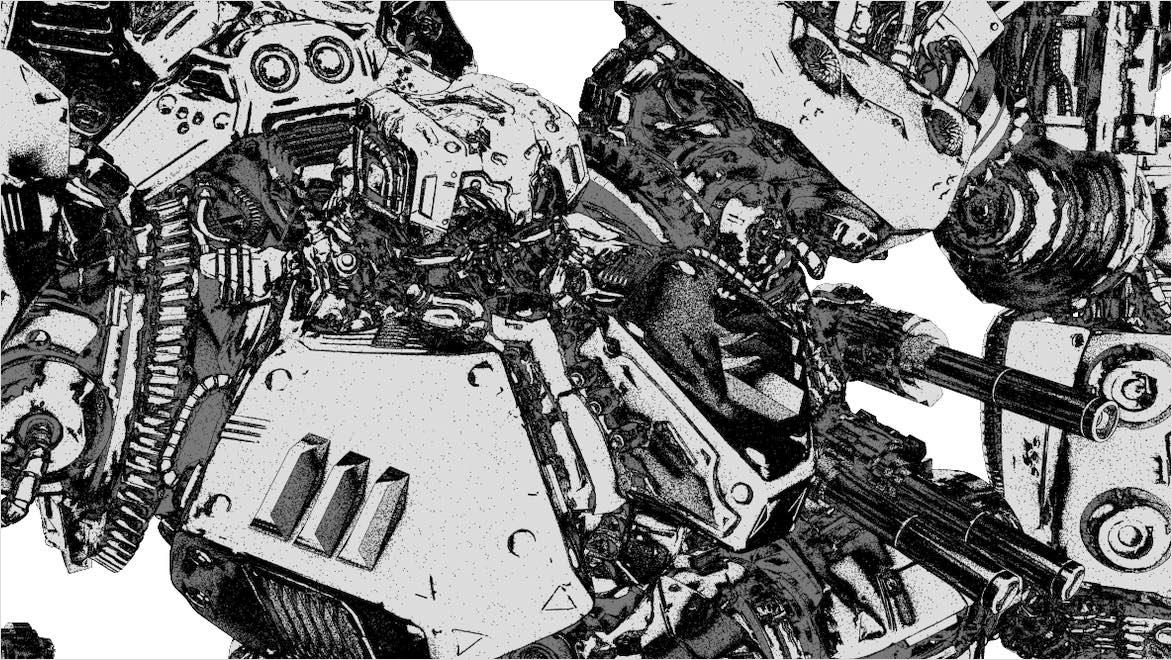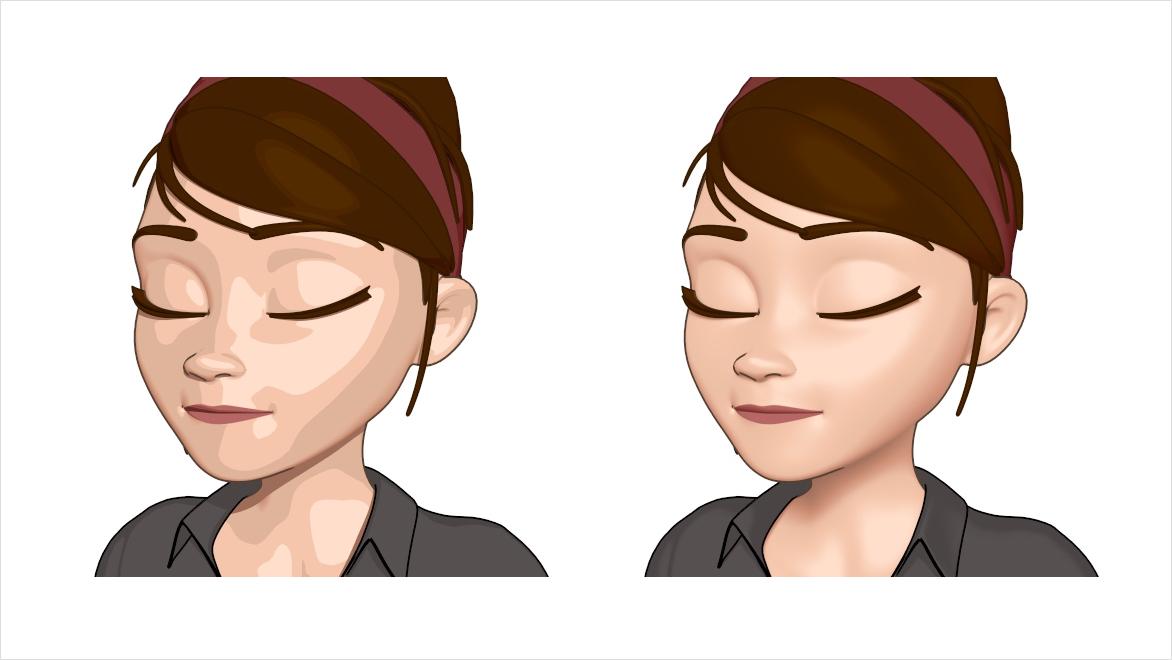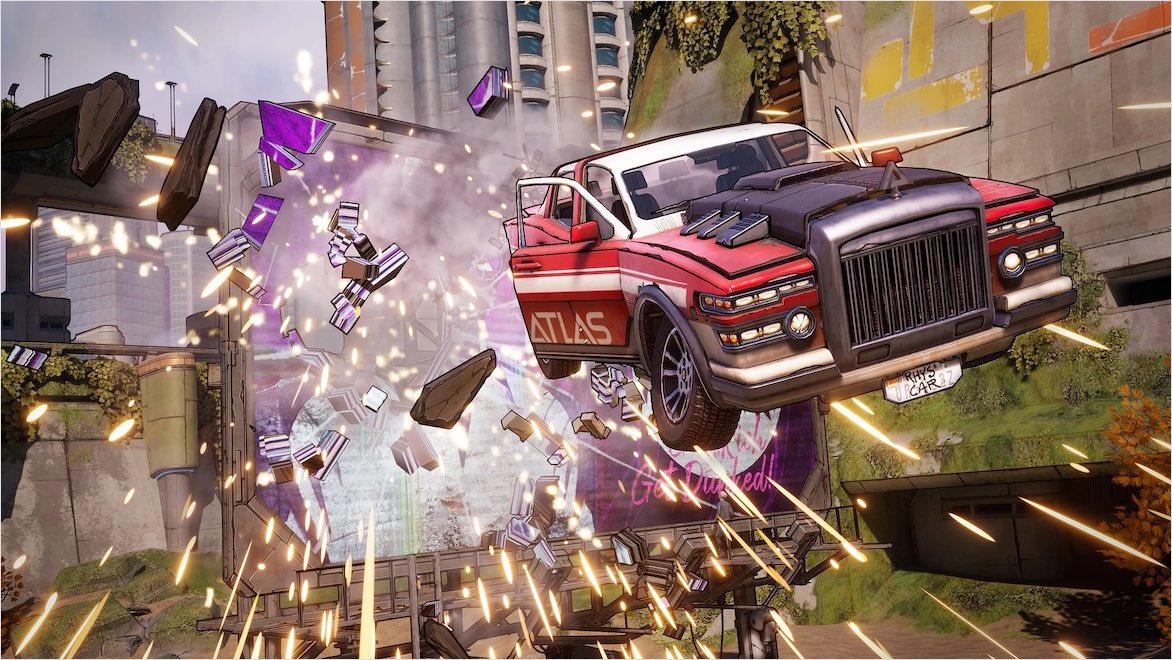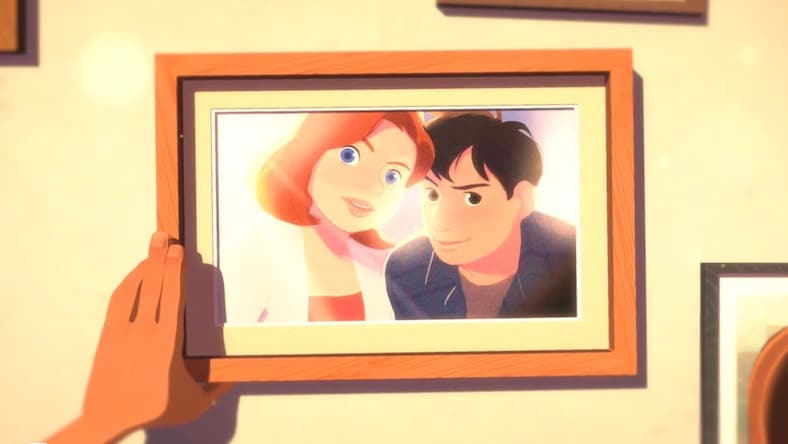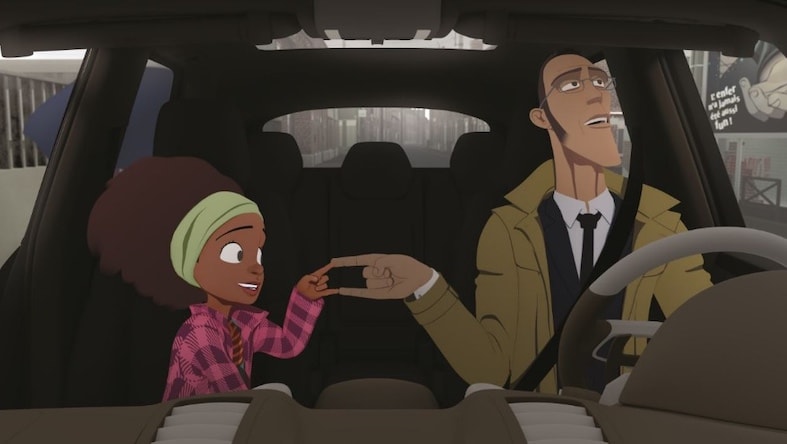& Construction

Integrated BIM tools, including Revit, AutoCAD, and Civil 3D
& Manufacturing

Professional CAD/CAM tools built on Inventor and AutoCAD
Toon shading is a non-photorealistic technique in 3D rendering software that makes 3D computer graphics appear more like 2D hand-drawn cartoons or comic books. Using shading and outlining, a toon shader simplifies the depth, lighting effects, and texture of objects and characters to combine elements of both 3D and 2D visuals into distinctive, stylized looks.
The retro feel of toon shading lends itself well to 3D animation adaptations of classic cartoons and 2D media. Teenage Mutant Ninja Turtles: Mutant Mayhem made with Arnold. Image courtesy of Mikros Animation.
Not long after the advent of computer graphics, experiments with toon shading (also referred to as cel shading) emerged as a way to render visuals in different, non-photorealistic ways. While traditional shading techniques use smooth gradients of shadow and lighting, toon shaders use only a small number of solid shades. In addition, toon shading tends to outline objects and characters in deep black. Both elements contribute to toon shading’s flatter, more hand-drawn appearance.
In the late 1990s to early 2000s, toon shading became more popular with video game developers, and the technique hit a new stride, such as with the popular multiplatform game Cel Damage. As animating within 3D modeling software became the norm, toon shading also became a way for visual media to retain more of the 2D look of cel animation and comic books along with the advantages of working in 3D software.
In the present day, toon shading is still important in animation and game design, helping 3D visuals achieve the look of vintage sci-fi, comic books, and manga that invokes nostalgia in older generations while appealing to a retro-modern cool aesthetic with younger audiences. Popular recent examples include Marvel’s What If…? series and Sony Pictures’ Spider Man: Across the Spider-Verse movie.
Let’s take a look at some of the specific capabilities of Autodesk Arnold’s toon shader.
When enabled, the toon shader’s edge setting detects the borders of an object or character and applies an edge to them, with settings for edge color, tonemap, opacity, and more. The silhouette settings enhance the presence of edges, and rim lighting can further emphasize edges by applying different light types around the inside of edges.
Other key traits of the toon shader include the specular reflection, specular highlights, and stylized highlights that dictate how a surface appears to reflect and refract light and how light casts highlights on the surface. Transmission simulates light scattering through a surface like glass and emission simulates an object emitting light.
Toon shaders have been instrumental in bringing popular franchises in the manga and anime world to video games. They have helped video game versions of Dragon Ball Z, Pokémon, and others retain their unique hand-drawn look within action-packed gameplay.
Toon shading and cel shading also let artists experiment with hybrid rendering techniques that combine different methods into original styles. For example, Need for Speed Unbound (2022), the 25th title in the NFS franchise stretching all the way back to 1994, mixed up its visual style by combining graffiti art and cel-shaded graphics with more realistic elements. Its uniquely remixed visual style and its open-world, illegal street racing gameplay made the game look like a fresh start for an old favorite.
Another long-running game series, Borderlands, made the bold choice of using a toon shading, comic art style in a first-person shooter (FPS) game in 2009. It looked like nothing else in its genre, and that—along with its addictive gameplay and irreverent humor—made it one of the most popular and bestselling FPS series.
Artists experimenting with toon shading can traverse visual terrain that sidesteps 3D conventions and captures audiences’ imaginations. Beyond just the cel shading technique that evokes comic books and cel animation, the Arnold toon shader can achieve other non-photorealistic styles as well, such as pixel art and a cross-hatching sketch style.
Using rendering software like Autodesk Arnold to apply a toon shader yields technical and creative benefits.
Toon shading bestows a stylized aesthetic upon 3D graphics that can be refreshing to audiences and make projects stand out. A toon shader’s hand-drawn appearance can spark nostalgia in older viewers and can also be more memorable compared to the standard 3D realistic rendering for younger viewers.
Using toon shading in animation or video games keeps the aesthetic consistent between various lighting conditions and also makes it easier to keep the visual style consistent if the project extends to other media formats.
Toon shading simplifies shading in general by using fewer colors and tones. It can make the work quicker than realistic shading while also simplifying the animations visually.
Part of the toon shading technique includes easily visible, black outlines around shapes, emphasizing 3D models’ form, structure, and silhouettes and making characters and objects stand out against backgrounds.
Toon-shaded graphics take less processing power to render than photorealistic graphics, so toon shading can help smaller development teams with small budgets. Toon shading can also make performance smoother when real-time rendering is used, like with video games.
Finally, toon shading gives artists a less conventional tool for experimenting with styles and getting creative. They can combine toon shading with other shading and rendering techniques to produce a unique aesthetic.
Scale your studio’s rendering and simulation capabilities, while equipping artists with powerful modeling and animation tools
NETH NOM & SARA K. SAMPSON
With the goal of combining 2D animation with fully realized 3D environments, these two industry professionals assembled a global crew and developed their own toon shader designs to give the award-winning animated short Sonder—animated in Autodesk Maya—its own special look.
Image courtesy of Neth Nom and Sara K. Sampson
GEARBOX STUDIO QUÉBEC
The latest installment of a beloved video game series, New Tales from the Borderlands is an epic cinematic adventure with a distinct, 3D toon shading style. To deliver a huge amount of episodic content in a short time, Gearbox Studio Québec built an animation pipeline from scratch, including Autodesk Maya and Flow Production Tracking software.
Image courtesy of Gearbox Software/2K Games
2 MINUTES
For the challenge of adapting popular European graphic novels into a visually stunning motion picture, this French animation studio used toon shading, as well as its own shading algorithms, to render everything in Autodesk Arnold after applying dynamic lighting effects in Maya software.
Image courtesy of Zombillenium © 2017 Maybe Movies, Belvision, 2 Minutes, Pipangaï
Learn all about using Autodesk Arnold’s toon shader with Maya, including toon shading a building, a mech, using the HalfTone OSL Shader, and more. The same tutorials are also available for Arnold for 3ds Max.
Toon shading is just one of many tools available in 3D rendering software, which generates still images and full-motion videos from scenes of 3D models, environments, and animations. Rendering software can also add color, light, textures, and shading to make the resulting graphics as lifelike or stylized as desired.
Arnold’s toon shader user guide describes the different components of the tool, such as stylized highlights, rim lighting, and tonemaps for achieving different shade gradations.
This tutorial video shows how to light and shade a robot in Arnold with the toon shader. It also covers the facing_ratio, ambient_occlusion, and osl shaders to create different cartoon styles.
Learn how to light and shade a cartoon attic scene using the toon, rampRGB, and ambient_occlusion shaders in Arnold with this five-minute video.
Find dozens more Autodesk Arnold tutorials on the toon shader and other shading, lighting, and rendering videos on this YouTube channel.
The toon shading technique is a non-photorealistic rendering technique that animators use to make 3D models and animations appear more like 2D hand-drawn cel animation or comic books. Toon shading uses outlining and shading to achieve its flat, cartoon-style look. Its outlining establishes a hard boundary around a 3D model’s shapes to emphasize its contours. A black outline makes the boundary stark, but it can also be colored according to the artist’s preference. Instead of smooth gradients, toon shading uses a small number of solid shades to represent light and shadow, contributing to the flat, hand-drawn look.
Choosing the right toon shader depends on your project’s particular needs, as well as your skill level and available tools. For example, complex toon shaders may allow more nuanced shading, more complex lighting conditions, and extra flexibility to adjust color bands, edge thickness, and more. A more complex toon shader may also require more resource-intensive rendering, which is not ideal if working on a single, lower-end computer.
Your chosen toon shader should be compatible with your 3D modeling and animation software. In Autodesk Arnold’s case, it integrates perfectly with both Maya and 3ds Max software, so compatibility isn’t a concern.
Cel shading is a subset of toon shading. They are very similar techniques for non-photorealistic rendering, and the two terms are sometimes used interchangeably. Both give 3D computer graphics the flatter, hand-drawn look of comic books or cel-animated cartoons.
Toon shading uses flat shade colors on top of a shade color and can create other stylistic looks, such as sketching, ink and oil painting, and a low-poly toon shader. Cel shading does not use shade gradients. Instead, it has only two or three tones to its shading. Its purpose is to specifically simulate the 2D look of anime, comic books, and cartoons for 3D graphics.
